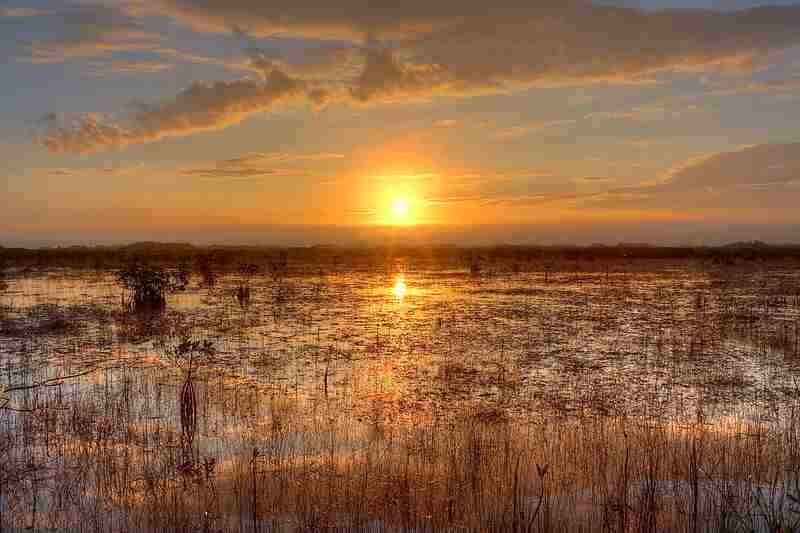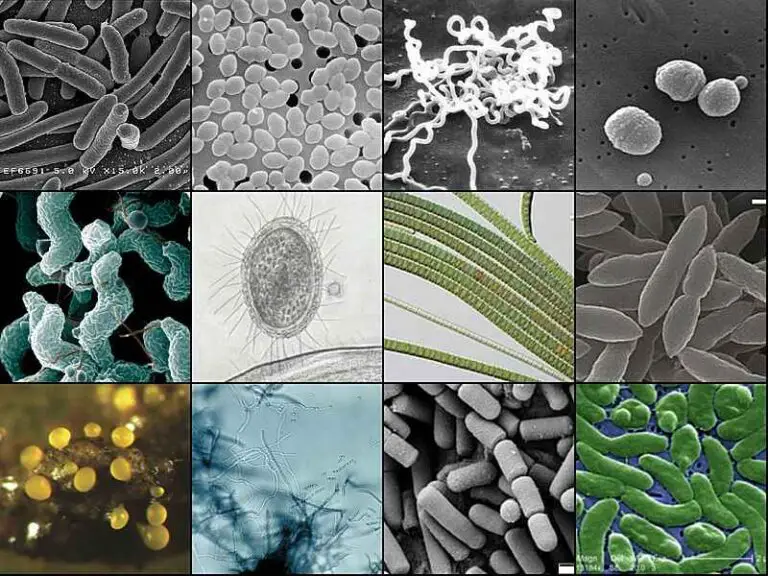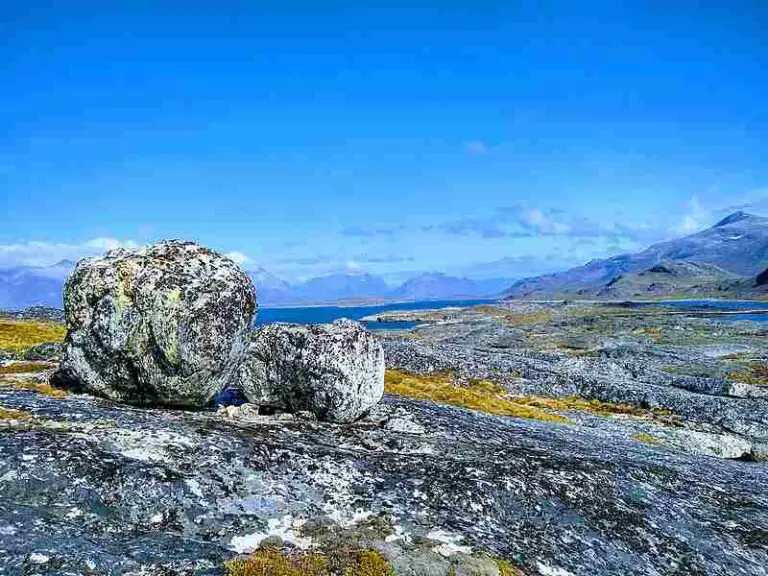7 Abiotic Factors in a Wetland Ecosystem and Their Characteristics
Abiotic factors in a wetland ecosystem are; water, solar radiation, sediments, atmospheric and dissolved gases, topography, physicochemical parameters, and nutrients.
This article discusses abiotic factors in a wetland ecosystem and their characteristics, as follows;
1). Water (as one of the Abiotic Factors in a Wetland Ecosystem)
Water is a fundamental component of wetland ecosystems, and is involved in their evolution, development and function.
One of the core characteristics of wetlands is their flooded or water-saturated condition, which has significant influence over the species richness, biodiversity and ecological processes occurring within these habitats.

Hydrology of Wetland Ecosystems
Water is a defining element or feature of the wetland biome, so that its availability, quality and dynamics together constitute the hydrological framework of this habitat.
Wetlands can be classified into different types on the basis of hydrological factors such as water sources, composition and translocation. These different classes include bogs, swamps, tidal salt marshes, and freshwater marshes [9].
Factors such as water flow trends, instantaneous water level, temporal fluctuations (in this water level) and duration of flooding or inundation, all affect the distribution of animals and plants, as well as the overall productivity of the wetland.
Aquatic Life in Wetland Habitats
The presence of water in wetlands, makes it an ideal habitat for various aquatic organisms, including reptiles, amphibians, some invertebrates, fish, and amphibians [23].
Wetlands serve as grounds for feeding, nursery and breeding, and contribute to the development of several unique adaptations and life cycle-patterns in aquatic species.
Water Quality in the Wetland Ecosystem
Wetlands (by means of their abiotic and biotic components) play a role in improving the quality of within their region of occurrence.
As water flows through wetlands, it undergoes a natural process of filtration, whereby microbes and vegetative clusters intercept and remove (or breakdown) foreign materials including suspended sediments, biomass and excessive nutrients; from the water column [22].
This mechanism ensures that some degree of water purification is achieved before downstream-flow occurs.

Flood Control and Water Storage in/by Wetlands
Wetlands are capable of storing and gradually releasing water, in such a manner that prevents flooding and regulates flow.
They function like natural, hydrological sponges, that absorb, accumulate and retain excess water in periods of heavy precipitation. The risk of flooding is mitigates in wetlands by mitigating the effects of peak saturation/peak flow, especially in downstream zones.
Groundwater Recharge in/by Wetlands
Wetlands contribute to the process of regional groundwater recharge, by allowing water infiltration (through soil layers) to occur, which helps replenish aquifers underground.
This process ensures that the availability of water resources in wetland regions is maintained, and is instrumental to the overall balance of hydrological conditions in such areas.
Wetlands and Erosion Control
The abiotic factors in a wetland ecosystem (including water) work together to achieve eco-structural stability and mitigate soil erosion.
They work along with wetland biotic factors like vegetation, which includes emergent plants and well-developed root systems, that bind soil particle and hold them firmly in place, so that the potential for erosion and sediment runoff is reduced.
Habitat Connectivity and Biodiversity of Wetlands
Due to the presence of water (which is an essential resource) in wetlands, these areas often play host to significant biodiversity, serving as habitat for various animal and plant species.
Wetlands are important as breeding grounds and migratory pathways for several species that depend on water [2], and contribute to the conservation of biodiversity on a regional scale.
2). Solar Radiation
Solar radiation, especially visible-light from the sun, is an important abiotic factor in wetland ecosystems.
It contributes immensely to productivity in this ecozone, and plays a role in the structural and functional development processes.
Solar Radiation as a Source of Energy in Wetlands
Solar radiation is the primary source of energy to support organic life in all biomes on Earth, including wetlands.
Autotrophic organisms like algae and plants in the wetland, utilize solar energy through the process of photosynthesis, transforming it into chemical bioenergy, which is the main form of energy that sustains the entire food chain [5].
Photosynthesis and Solar Radiation
Solar-electromagnetic radiation is the main source of light which is necessary light for photosynthesis; the biochemical process by which autotrophic organisms produce organic compounds (such as sugars) and oxygen.
These autotrophic/photosynthetic organisms are referred to as primary producers, and occupy the base of the wetland food chain. Their abundance, health and function all point to the importance of solar radiation in their habitat.

Solar Radiation, Plant Growth, and Productivity in Wetland Ecosystems
Availability of solar radiation, influences the growth and productivity of plants in wetlands.
The rate of photosynthesis is directly determined by factors such as the duration and intensity of sunlight [10]. This in turn determines species composition, biomass production, and plant growth in the wetland.
Solar radiation has also had significant impact on the adaptations of plant species, which have developed various physiological and behavioral strategies to maximize their use of this resource
Sunlight Penetration and Spatial Distribution
The transparency or clarity of water in wetlands, directly influences the degree to which solar radiation penetrates into the aquatic environment.
Water with more clarity, supports the entry of more sunlight to greater depths, so that submerged algae and plants can perform photosynthesis and be productive.
On the other hand, factors like the presence of suspended particles and dense vegetation, can reduce sunlight penetration and productivity in the water column [17].
Solar Radiation and Temperature Regulation in Wetlands
Solar radiation contains thermal energy, which causes the heating of wetland ecosystems.
The rate of absorption (and dissipation) of solar radiation by sediments, vegetation and water in wetlands, influences the temperature regimes, and affects both biological and physicochemical processes.
Variations in temperature can influence the growth rates, reproductive cycles and metabolism [13] of all wetland organisms.
Solar radiation also influences the process of evaporation from water and soil, and transpiration from plants in wetlands. These two related processes are collectively referred to as evapotranspiration.
The loss of water during evapotranspiration, helps maintain the hydrological equilibrium of wetlands, while contributing to local weather trends.
3). Wetland Sediments (as one of the Abiotic Factors in a Wetland Ecosystem)
Sediments are abiotic factors in all ecosystems including wetlands, because they are inorganic in nature, and do not undergo any biological interaction with organic matter which may occur as dispersed particles among them.
In wetlands, sediments are involved in various aspects and perform diverse functions, some of which are discussed below;
Composition of Wetland Sediments
Wetlands receive and accumulate sediments that have been transported by water from adjacent areas.
Such sediments may comprise of a mixture of organic matter, clay, silt, sand, and gravel-sized particles, among others [20].
The specific composition of sediments in wetlands can vary with factors like regional hydrology and source area (of parent materials).

Wetland Sediments and Nutrient Cycling
Sediments are a repository or accumulation-medium for nutrients in wetland ecosystems.
Minerals and organic materials in wetland sediments, may breakdown to release nutrients like phosphorus, potassium and nitrogen, which support the growth of algae and wetland plants.
Various processes involving chemical compounds and nutrients may occur in wetland soils, so that these nutrients are converted and translocated from one form or zone, to another.
Nitrogen fixation, organic-inorganic transformation, and carbon sequestration, are examples of these processes [3].
Wetland Sediments as a Habitat for Organisms
Sediments serve as microhabitat for various wetland organisms.
In submerged areas, benthic organic groups including some mollusks like snails, as well as insect larvae and worms, may be found living on or within the underwater sediments.
These organisms have important roles to play in decomposition, nutrient-cycling, and food supply for other wetland species.
Wetland Sediments, Shoreline Stability, and Erosion Control
Wetland sediments (and vegetation) help in the stabilization of shorelines and prevention of erosion [6].
Sediment accumulation along wetland margins can help provide a physical buffer that minimizes the impact of wave action, and absorbs energy of flowing water masses, so that their erosion potential is reduced, and the wetland environment is protected from severe erosion.
Wetland Sediments, Regional Degradation, and Contaminant Storage
Like erosion, wetland sediments can also help prevent extensive degradation by contaminants.
This is because the dense, permeable sediments can act as sinks for the storage of contaminants/pollutants.
Organic contaminants and heavy metals are examples of foreign, potentially-toxic materials that may become trapped within the pore spaces of sedimentary masses; so that they have low bio-availability and minimal effect on organisms.
Under such conditions, only excessive influx of pollutants can have significant ecological and environmental impacts; such as large-scale oil spills. Smaller amounts of contaminants will be demobilized in the sediments and have little effect.
Sediments and the Physical Structure of Wetland Ecosystems
Sediments and their dynamics are crucial the development and maintenance, of the physical structure of wetland habitats.
These sediments (due to their particulate diversity) create spatial differences in microtopography, so that features like mounds, depressions and small channels may form, which influence the trends of water flow, microhabitat creation, and nutrient distribution.
4). Atmospheric and Dissolved Gases
Atmospheric and dissolved gases play are vital to wetland ecosystems as essential abiotic factors. They are also known to influence various ecological processes in the biome.
Atmospheric Gases in the Wetland
Wetlands interact with the atmosphere, so that gases like oxygen (O2), carbon dioxide (CO2), and methane (CH4) are continually exchanged.
Some types of wetland vegetation, such as emergent plants, facilitate the exchange of gases between the atmosphere and water in wetlands [11].
Atmospheric gases themselves influence multiple processes like; respiration, decomposition and photosynthesis in wetland ecosystems.
*Wetland Oxygen (O2)
The availability of oxygen is crucial for survival of aerobic organisms that inhabit wetlands.
In wetland areas that are well-aerated, dissolved oxygen occurs in the water, where it supports aquatic-organic respiration of invertebrates; microbes, and fish (among other aquatic organisms).
Oxygen is also important for biodegradation of organic matter by aerobic fungi and bacteria [19].
*Carbon Dioxide (CO2) in the Wetland
In the process of photosynthesis, wetland plants take up atmospheric carbon dioxide, and utilize it as a raw material for the production of organic matter.
Carbon dioxide is therefore an essential source of carbon for ecosystem sustenance.
Also, carbon dioxide is released as a byproduct of the decomposition of biomass by microbes, in wetland soils [16].
*Methane (CH4) in Wetlands
Methane is a highly-potent greenhouse gas that is mostly produced under oxygen-deficient or anoxic/anaerobic conditions, in wetland sediments.
Wetlands with saturated or waterlogged soils, are often sites of significant methane emission.
Methane is generated as a result of microbial activities and processes (like methanogenesis). As a greenhouse gas, it has global warming capabilities and contributes to climate change on various scales.
*Dissolved Gases in Wetland Ecosystems
In addition to atmospheric gases, wetland water contains dissolved gases like oxygen and carbon dioxide, which are also essential for the survival of aquatic organisms.
Dissolved oxygen (DO) in water supports aquatic respiration for various species, and makes the flooded wetland zone habitable.
Carbon dioxide in water can also be used by aquatic plants during photosynthesis.
*Status of Atmospheric Gases as Abiotic Factors in a Wetland
Atmospheric gases are considered abiotic factors because they are inorganic, non-living components of the environment.
They are ecologically important due to their interaction with living organisms as well as other abiotic factors to shape the structure and dynamics of wetland ecosystems.
5). Topography (as one of the Abiotic Factors in a Wetland Ecosystem)
Topography refers to the physical outline, characteristics and detectable features of the land surface, and can be analyzed in terms of geomorphology, slope, and elevation [18]; all of which influence the functioning and evolutionary trend of wetland ecosystems.
Landform and Elevation as Elements of Wetland Topography
The landform and elevation of any given area, are important elements that determine the evolution and attributes of its topography.
For wetlands, they often occur in low-lying zones where significant water accumulation occurs, including coastal plains, floodplains, and regional depressions/subsidence zones [4].
Topography is important for affecting drainage patterns and water flow trends in general, both of which are essential aspects of wetland hydrology.

Hydrology as a Function of Topography in Wetlands
The topography of surrounding landscapes, has a direct (and indirect) effect on the hydrological structure and processes within wetlands.
Topography affects hydrology by determining the flow trend of water [14], which could be in the form of runoff from precipitation or adjacent water bodies; or groundwater in underground aquifers.
Topographic features, like contours and slopes, can influence the dynamics of water resources in terms of spatial distribution and trend of flow. These dynamics in turn determine the availability of water for plants and animals.
Water Retention and Movement in Wetlands, as a Function of Topography
Topographic elements like slope and elevation affect the retention and movement of water in wetlands.
Gently sloping or flat areas are usually characterized by slower pace of water movement/flow, and higher rate of water retention; which creates suitable conditions for wetland development.
On the contrary, areas with steeper slopes may experience faster rates of water flow, and lower rates of retention, which limit the formation, extent, and quality of wetland habitats in such areas.
Topography and Wetland Zonation
Topography contributes to the zonation of wetlands, because of the tendency of different plant and animal communities to occur with varying abundance in various segments along an elevation gradient.
Distinct zones can be identified in some wetlands, including open water areas, wetland margins, and emergent marshes. These different zones are influenced and delineated by topographic variations, which are accompanied by varying soil conditions and water levels.
Topography and Habitat Heterogeneity in Wetlands
The spatial variations in topographic features, within wetlands, contribute to heterogeneity in these habitats.
Habitat heterogeneity creates a range of distinct microhabitats that support different animals and plant species.
Wetlands with high topographic diversity, play host to a combination of transitional zones, open water areas, and dense vegetated areas; which can be viewed as distinct ecological niches for various organisms with differences in their adaptations and requirements.
6). Physicochemical Parameters
Physicochemical parameters can be described as the physical and chemical attributes that influence the functioning and general wellbeing of ecosystems; including wetlands.
These parameters are sources of important information about environmental conditions such as water quality, which determine the ecosystem's capacity to support life forms.
Some important wetland physicochemical parameters are discussed below;
*Temperature in Wetlands
Temperature has an effect on to growth, reproduction, and general metabolic rates of organisms in wetlands.
It can influence the trophic interactions of species, as well as their distribution within the ecosystem. Variations in temperature may also influence nutrient availability and the rate of biochemical reactions.
*Wetland pH
pH can be defined as a measure of the alkalinity and acidity of a medium, such as soil or water [15].
It has a crucial role to play in the reproduction, survival and continuity of aquatic organisms (like those in wetlands).
Different wetland species have specific ranges of pH which they can tolerate. Also, pH fluctuations can affect toxicity of some media and substances, as well as general nutrient availability.
*Dissolved Oxygen (DO) in Wetlands
DO refers to the amount of oxygen that occurs as dissolved gas (solute) in water. It is an essential parameter for respiration and survival of aquatic organisms.
Oxygen is required by invertebrates and fish, among other organisms, in order for these to carry out their metabolic processes. It implies that adequate DO levels are necessary for the biological success of aquatic diversity.
*Turbidity in Wetlands
Turbidity is a measure of the clarity or cloudiness of water, specifically with regards to the presence of suspended particles [8].
High turbidity in wetlands can reduce sunlight penetration, and limit the effectiveness as well as spatial range of photosynthesis in autotrophs.
It can also affect the reproduction and feeding of organisms, by reducing underwater visibility and interfering with navigation.
*Nutrients in Wetlands
Nutrients like phosphorus and nitrogen are essential for the growth and survival of algae and aquatic plants in wetlands.
Excessively-high nutrient levels, often resulting from human activities, can cause eutrophication and harmful algal blooming [7], which can negatively impact organic productivity in wetlands.
*Wetland Salinity
Salinity is a measure of the concentration of dissolved salts in a medium such as water.
It is an important physicochemical parameter in coastal wetlands or other types of wetlands with hydrological links to marine or saline systems.
Different organisms have varying degrees of saltwater tolerance, so that salinity affects the abundance and distribution of wetland plants and animals.
*Conductivity in Wetlands
Conductivity is a measure of the ability of water or any other medium, to conduct electrical current, and is linked to the concentration of dissolved ions in water [21].
It can provide insight into the mineral content, ans salinity of the water, which in turn determine the species of organisms that can thrive in a particular wetland, and their performance.
Studying, understanding and monitoring physicochemical parameters enable scientists to evaluate the functioning and health, of wetland ecosystems, as well as to detect unfavorable environmental issues and potential problems.
7). Nutrients (as one of the Abiotic Factors in a Wetland Ecosystem)
Nutrients have a vital role to play in the functioning and sustenance of wetland ecosystems.
They are essential for organic growth and productivity for all groups including algae, plants, and heterotrophic organisms within the wetland.
Nutrients like nitrogen and phosphorus, are obtained from diverse sources and undergo recycling processes that influence overall nutrient balance and availability in the ecosystem.
Abiotic Factors that Affect the Nutrient Cycle in Wetland Ecosystems
Some abiotic factors that affect the nutrient cycle in wetland ecosystems are; water flow, sediments, pH and redox conditions, as well as oxygen availability. Human activities also affect the nutrient cycle.
Each of the above-listed factors is discussed briefly below;
*Water Flow
The flow (pattern, rate) of water within a wetland can influence nutrient cycles in terms of the movement and distribution of nutrients.
Higher water flow rates imply higher nutrient mobility, which in extreme cases can flush nutrients out from the system entirely.
On the contrary, low-flow conditions support nutrient accumulation and increased regional availability for plant uptake.
*Sediments as a Factor Affecting the Nutrient Cycle in Wetland Ecosystems
Sediments can function a reservoir or repository for nutrients like phosphorus.
These nutrients often accumulate in bottom sediments, from which they can be released back into the water column through different processes, including bioturbation by organisms, and sediment resuspension [1].
*pH and Redox Conditions
pH and redox conditions also affect the availability, distribution and speciation of nutrients.
Some nutrients become more soluble, concentrated, or less available under different pH levels/conditions or redox states, which impacts their uptake and cycling.
*Oxygen Availability
Oxygen availability affects the nutrient cycle, by influencing the biogeochemical elements and processes behind nutrient cycling.
Under conditions where oxygen availability is high, aerobic bacteria can actively transform organic matter to inorganic nutrients through biodegradation processes.
Anaerobic bacteria are more active under oxygen-deficient/anoxic conditions; and may help release nutrients in the form of phosphates or ammonium [12].
*Human Activities and Nutrient Cycling in Wetlands
Human activities (in adjacent areas) can significantly influence nutrient cycling in wetland ecosystems.
Anthropogenic phenomena like; agricultural pollution, urban development and wastewater discharge, can all affect the dynamics and concentrations of certain nutrients in nearby or hydrologically-linked wetland areas. These effects are often observed in the form of over-accumulation of nutrients, or eutrophication, with accompanying ecological problems.
Conclusion
Abiotic factors in a wetland ecosystem are;
1. Water
2. Solar Radiation
3. Sediments
4. Atmospheric and Dissolved Gases
5. Topography
6. Physicochemical Parameters
7. Nutrients
References
1). Adámek, Z.; Marsálek, B. (2013). "Bioturbation of sediments by benthic macroinvertebrates and fish and its implication for pond ecosystems: A review." Aquaculture International 21(1). Available at: https://doi.org/10.1007/s10499-012-9527-3. (Accessed 17 July 2023).
2). Blake-Bradshaw, A.; Lancaster, J.; O'Connell, J. R.; Matthews, J. W.; Eichholz, M. W.; Hagy, H. (2020). "Suitability of Wetlands for Migrating and Breeding Waterbirds in Illinois." Wetlands 40(6):1-18. Available at: https://doi.org/10.1007/s13157-020-01276-7. (Accessed 17 July 2023).
3). Cheng, C.; Li, M.; Xue, Z.; Zjang, Z.; Lyu, X.; Jiang, M.; Zhang, H. (2020). "Impacts of Climate and Nutrients on Carbon Sequestration Rate by Wetlands: A Meta-analysis." Chinese Geographical Science 30(3):483-492. Available at: https://doi.org/10.1007/s11769-020-1122-3. (Accessed 17 July 2023).
4). Dong, X.; Hu, C. (2021). "A new method for describing the inundation status of floodplain wetland." Ecological Indicators 131(10):108144. Available at: https://doi.org/10.1016/j.ecolind.2021.108144. (Accessed 17 July 2023).
5). Fennessy, S.; Cronk, J. (2018). "Primary Production and Respiration: Ecological Processes in Wetlands." The Wetland Book (pp.315-322). Available at: https://doi.org/10.1007/978-90-481-9659-3_67. (Accessed 17 July 2023).
6). Gedan, K.; Kirwan, M. L.; Wolanski, E.; Barbier, E. B. (2010). "The Present and Future Role of Coastal Wetland Vegetation in Protecting Shorelines: Answering Recent Challenges to the Paradigm." Climatic Change 106(1):7-29. Available at: https://doi.org/10.1007/s10584-010-0003-7. (Accessed 17 July 2023).
7). Glibert, P. M.; Burkholder, J. (2011). "Harmful algal blooms and eutrophication: “strategies” for nutrient uptake and growth outside the Redfield comfort zone." Chinese Journal of Oceanology and Limnology 29(4):724-738. Available at: https://doi.org/10.1007/s00343-011-0502-z. (Accessed 17 July 2023).
8). Gillett, D.; Marchiori, A. (2019). "A Low-Cost Continuous Turbidity Monitor." Sensors 19(14):3039. Available at: https://doi.org/10.3390/s19143039. (Accessed 17 July 2023).
9). Greaver, T. L.; Liu, L.; Ronbink, R. (2011). "Chapter 17: Wetlands." Assessment of Nitrogen Deposition Effects and Empirical Critical Loads of Nitrogen for Ecoregions of the United States (pp.193-208). Available at: https://www.researchgate.net/publication/260713341_Chapter_17_Wetlands. (Accessed 17 July 2023).
10). Hew, C. S.; Krotkov, G.; Canvin, D. T. (1969). "Effects of Temperature on Photosynthesis and CO(2) Evolution in Light and Darkness by Green Leaves." Plant Physiology 44(5):671-7. Available at: https://doi.org/10.1104/pp.44.5.671. (Accessed 17 July 2023).
11). Ho, D. T.; Engel, V.; Ferron, S.; Hickman, B.; Choi, J.; Harvey, J. W. (2018). "On Factors Influencing Air-Water Gas Exchange in Emergent Wetlands." Journal of Geophysical Research: Biogeosciences 123(1). Available at: https://doi.org/10.1002/2017JG004299. (Accessed 17 July 2023).
12). Hou, L.; Zheng, Y.; Hou, L.; Li, X.; Lin, X.; Yin, G.; Gao, J.; Deng, F.; Chen, F.; Jiang, X. (2015). "Anaerobic ammonium oxidation and its contribution to nitrogen removal in China's coastal wetlands." Scientific Reports 5(1):15621. Available at: https://doi.org/10.1038/srep15621. (Accessed 17 July 2023).
13). Islam, A.; Uddin, H.; Uddin, J.; Shahiahan (2019). "Temperature changes influenced the growth performance and physiological functions of Thai pangas Pangasianodon hypophthalmus." Aquaculture Reports. Available at: https://www.academia.edu/50840380/Temperature_changes_influenced_the_growth_performance_and_physiological_functions_of_Thai_pangas_Pangasianodon_hypophthalmus. (Accessed 17 July 2023).
14). Mulyadi, A.; Dede, M.; Widiawaty, M. A. (2020). "Spatial interaction of groundwater and surface topographic using geographically weighted regression in built-up area." Available at: https://doi.org/10.31219/osf.io/6457v. (Accessed 17 July 2023).
15). Oshunsanya, S. (2019). "Introductory Chapter: Relevance of Soil pH to Agriculture." Soil pH for Nutrient Availability and Crop Performance. Available at: https://doi.org/10.5772/intechopen.82551. (Accessed 17 July 2023).
16). Palta, M. M.; Ehrenfeld, J. G.; Groffman, P. M. (2013). "Denitrification and Potential Nitrous Oxide and Carbon Dioxide Production in Brownfield Wetland Soils." Journal of Environmental Quality 42(5):1507-17. Available at: https://doi.org/10.2134/jeq2012.0392. (Accessed 17 July 2023).
17). Pedersen, O.; Colmer, T. D.; Sand-Jensen, K. (2013). "Underwater Photosynthesis of Submerged Plants – Recent Advances and Methods." Frontiers in Plant Science 4:140. Available at: https://doi.org/10.3389/fpls.2013.00140. (Accessed 17 July 2023).
18). Peng, X.; Wu, W.; Zheng, Y.; Sun, J.; Hu, T.; Wang, P. (2020). "Correlation analysis of land surface temperature and topographic elements in Hangzhou, China." Springer Nature, Scientific Reports 10(1):10451. Available at: https://doi.org/10.1038/s41598-020-67423-6. (Accessed 17 July 2023).
19). Reineke, W. (2005). "Aerobic and Anaerobic Biodegradation Potentials of Microorganisms." Biodegradation and Persistance (pp.1-161). Available at: https://doi.org/10.1007/10508767_1. (Accessed 17 July 2023).
20). Renani, M. M.; Rezaei, K.; Arian, M.; Aleali, M.; Giahchi, P. (2020). "Sedimentology and Geochemistry of Quaternary Sediments and Determination of Sediment Transport, Tectonic setting in the wetland of Saghalak-Sar Rasht." Journal of Geology Geography and Geoecology 29(3):550-561. Available at: https://doi.org/10.15421/112050. (Accessed 17 July 2023).
21). Rusydi, A. (2018). "Correlation between conductivity and total dissolved solid in various type of water: A review." IOP Conference Series Earth and Environmental Science 118(1):012019. Available at: https://doi.org/10.1088/1755-1315/118/1/012019. (Accessed 17 July 2023).
22). Sileshi, A.; Assayie, A. A.; Beyene, A.; Stiers, I.; Triest, L. (2020). "Water Purifying Capacity of Natural Riverine Wetlands in Relation to Their Ecological Quality." Frontiers in Environmental Science 8. Available at:https://doi.org/10.3389/fenvs.2020.00039. (Accessed 17 July 2023).
23). Uzarski, D.; Bosch, A. T.; Cooper, M. J. (2009). "Wetland Ecology and Management for Fish, Amphibians and Reptiles." Encyclopedia of Inland Waters (pp.582-589). Available at: https://doi.org/10.1016/B978-012370626-3.00059-4. (Accessed 17 July 2023).




